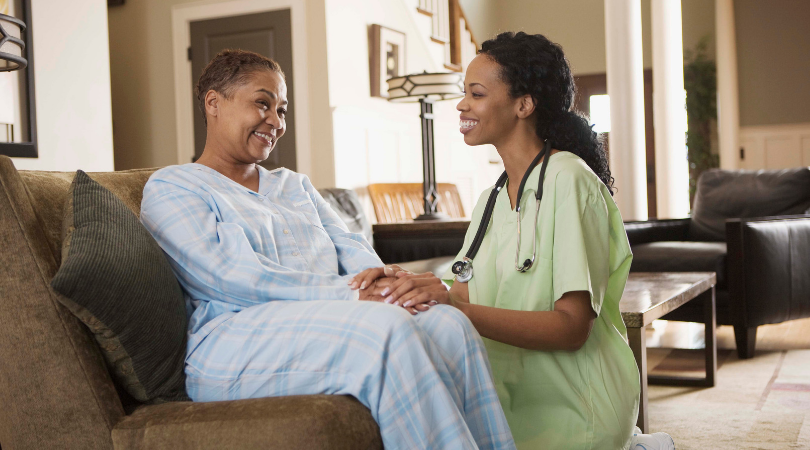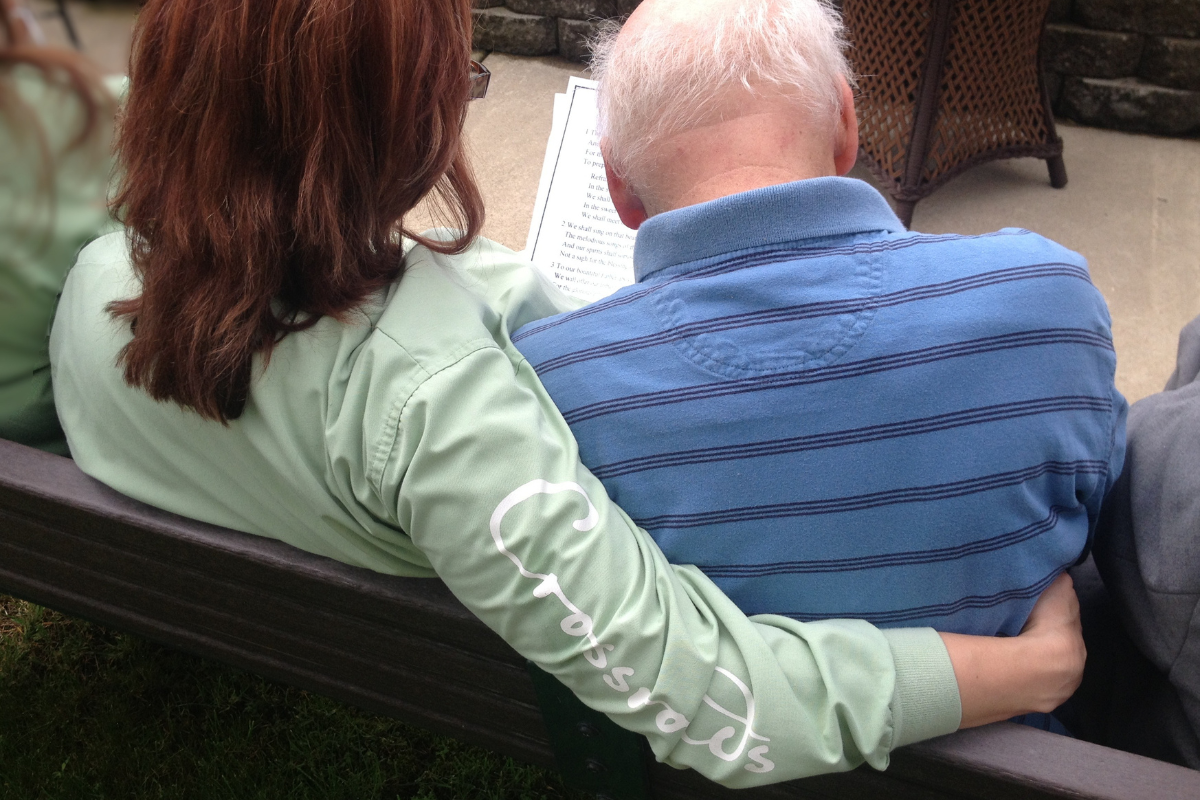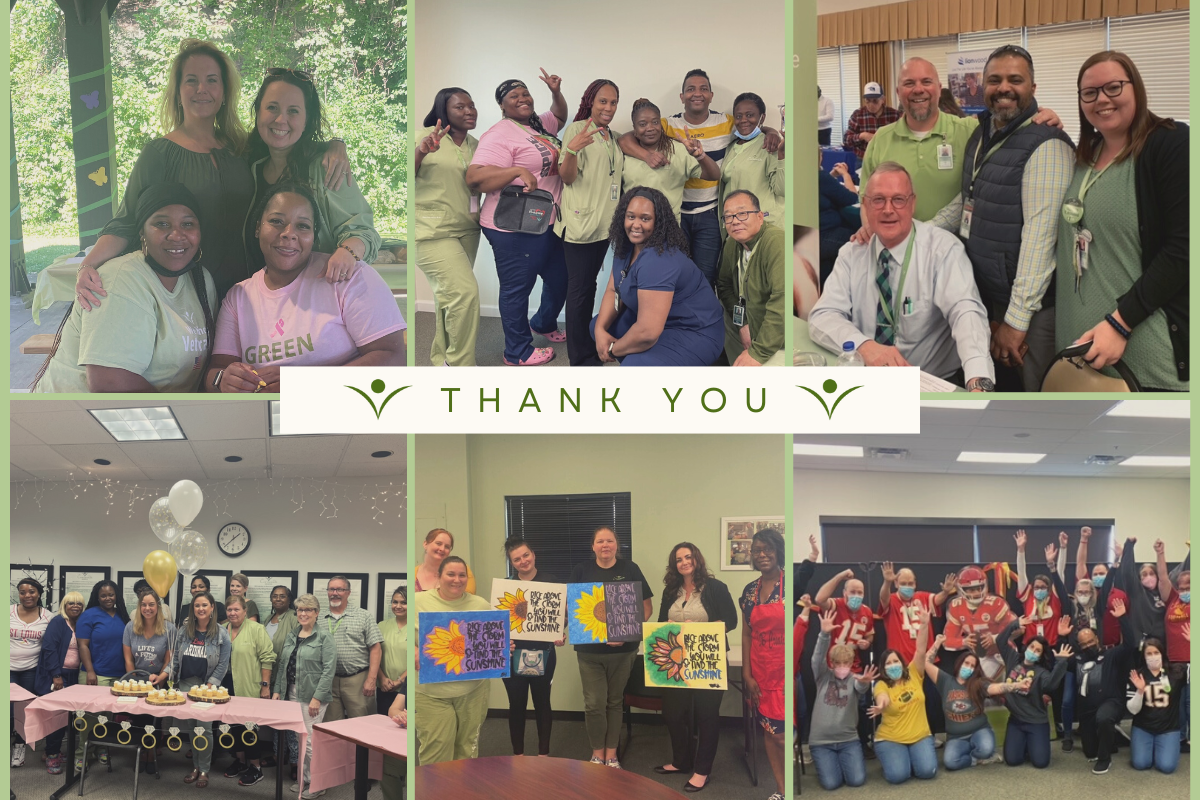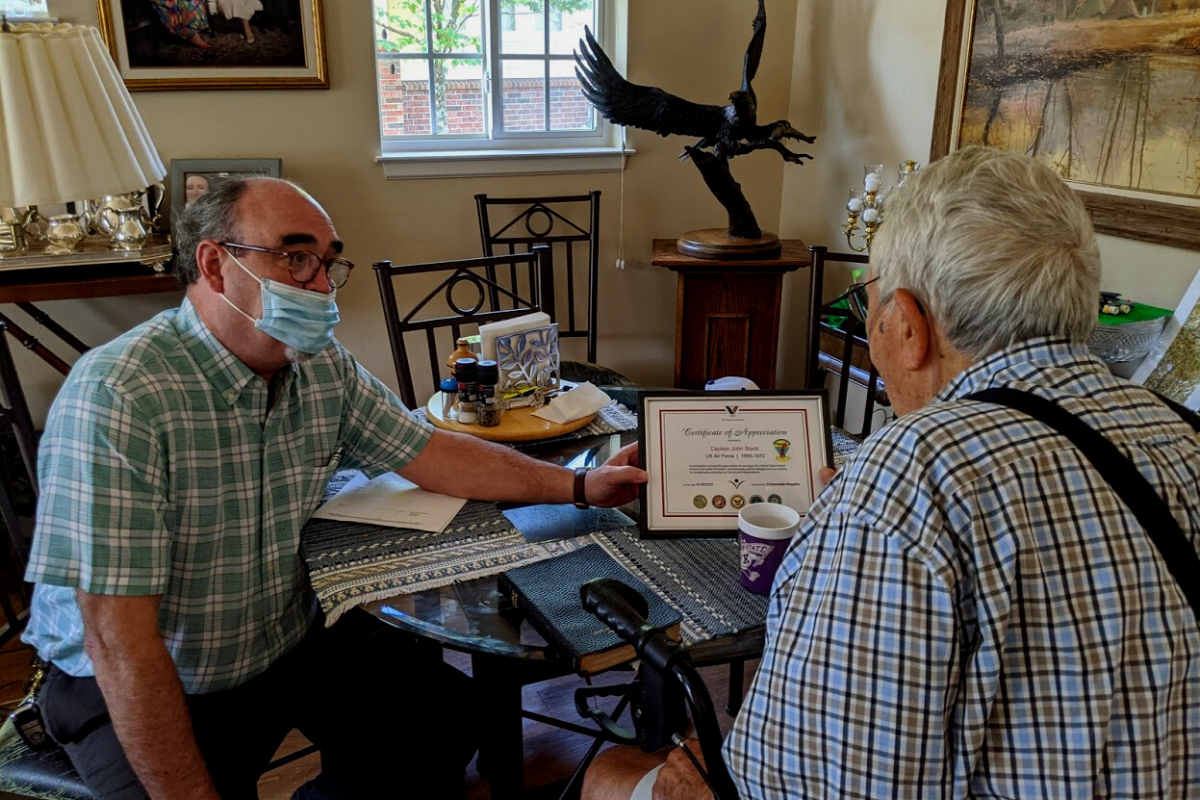What To Expect With Hospice At Home

According to a Dartmouth Atlas of Health Care study, more than 80% of patients with a chronic disease say they want to avoid hospitalization and intensive care when they are dying. Despite this, only 25% of Americans die at home.
While cultural norms play a role in this, many families are simply unaware that hospice can provide the level of care needed in the home. In fact, “Is Hospice a Place?” is one of the most common hospice questions Crossroads Hospice & Palliative Care receives. Knowing what to expect from hospice home care helps bring peace of mind to families who want to honor their loved one’s wish to remain at home.
Hospice is not a place. It’s a service.
Hospice brings physical, emotional, and spiritual care and support to wherever our patients call home – whether that is their family home, an assisted living facility or a nursing home. Families should consider their loved one’s end-of-life wishes as they explore what to expect in at-home vs in-patient hospice care. In-patient beds can be arranged for patients who need it, but most patients are able to remain in their primary residence if they prefer this.
Hospice home care: what to expect.
When a patient is referred to Crossroads by a physician or family member, it is understood that time is of the essence. The team arranges for an admissions nurse or social worker to meet with the family as soon as possible – typically within the hour. This hospice consultation can happen in the location of the family’s choosing including their home, the hospital, or a convenient public location like their office or local coffee shop.
At this first meeting, the Crossroads team explains the benefits of hospice. Admission to Crossroads can be completed at this time. The team will assess patient and family needs and develop a plan of care, spelling out what the family can expect from hospice home care. In addition to staff visits, hospice service includes any needed medical supplies including hospital beds, wheelchairs, and incontinence supplies. These items will be delivered to the home. All prescriptions related to pain and comfort management will also be covered by the hospice benefit.
Over the first few days, members of the Crossroads team including nurses, aides, a social worker, and chaplain will visit the family. The team will coordinate with the family on a schedule of regular nursing visits [Link to Simon PR blog on visits], assistance with personal care such as bathing, and emotional and spiritual support visits according to the plan of care.
Hospice home care: the final days at home.
When a patient begins to show symptoms that their final days are near, Crossroads increases the level of home visits to meet the needs of the patient and their families. Crossroads is ranked among the nation’s best for care in the final days of life.
As the patient declines, Crossroads activates the Evenmore program, providing continuous ‘round-the-clock hospice care in the patient’s home. Crossroads staff will stay with the patient and family, providing any needed medical and emotional support. Once the patient passes, staff will assist with final details and paperwork and provide bereavement support to the family.
Hospice home care: expect more.
Crossroads is available 24 hours a day, 365 days a year to admit patients, provide care, and answer questions. A dedicated team of on-call staff is available to assist families in the evenings and on weekends should an urgent need arise.
If you have a question about what to expect from hospice home care or need to begin the hospice admission process, please call 1-888-564-3405 to speak with a Crossroads representative.
If you found this information helpful, please share it with your network and community.
Copyright © 2017 Crossroads Hospice & Palliative Care. All rights reserved.




